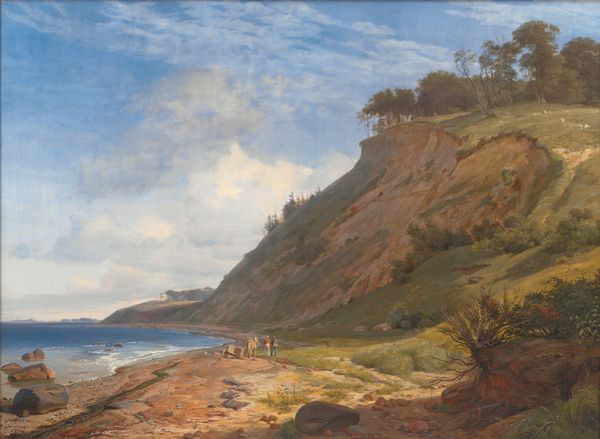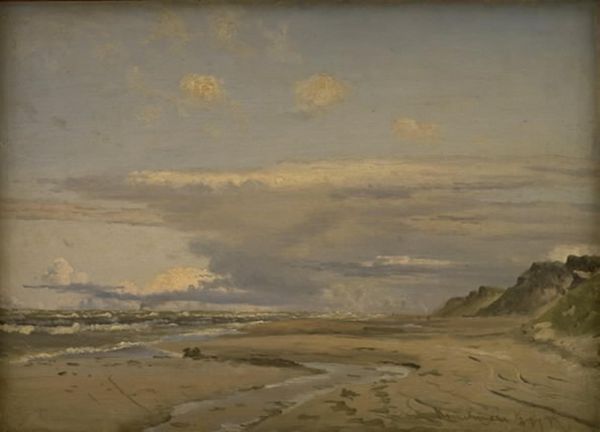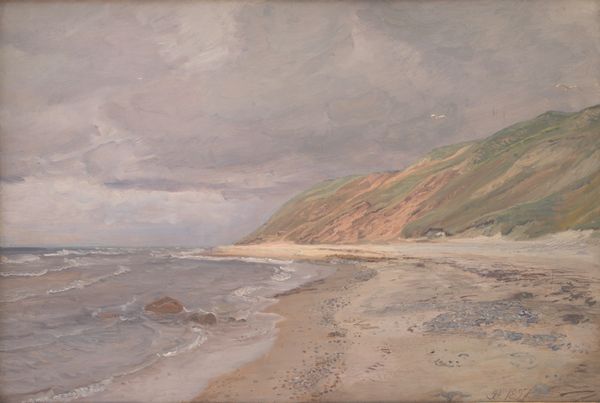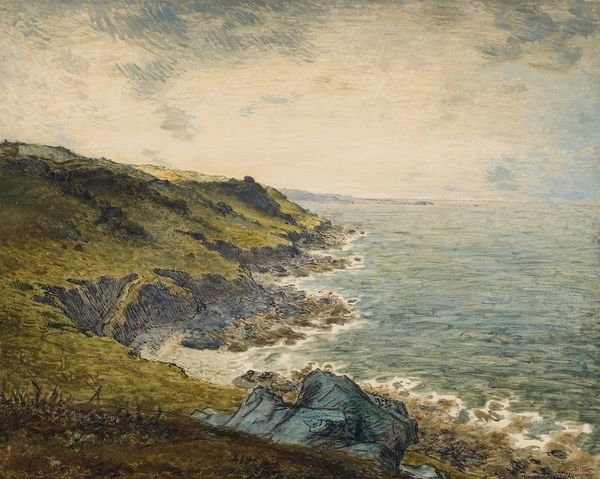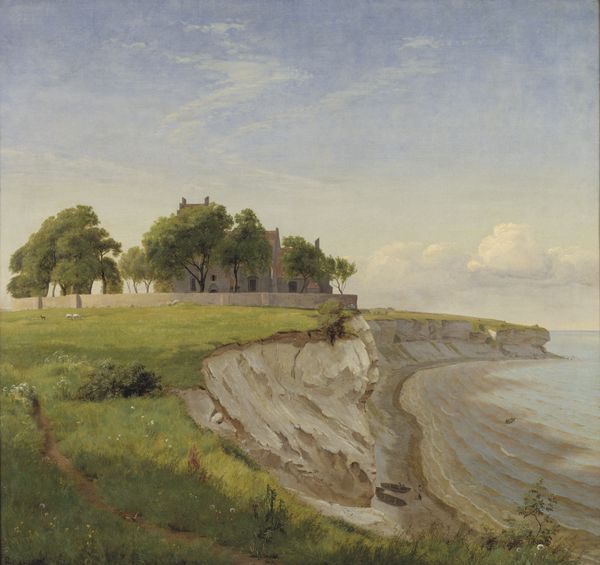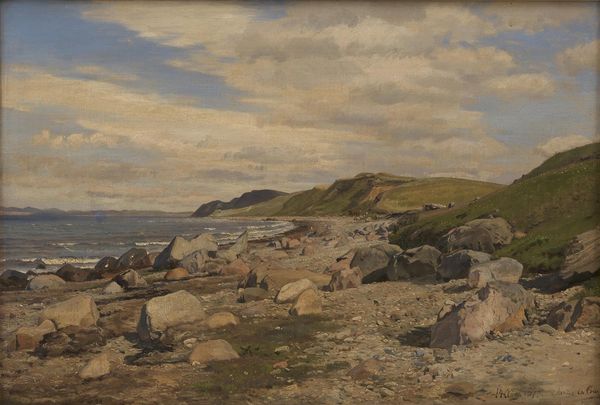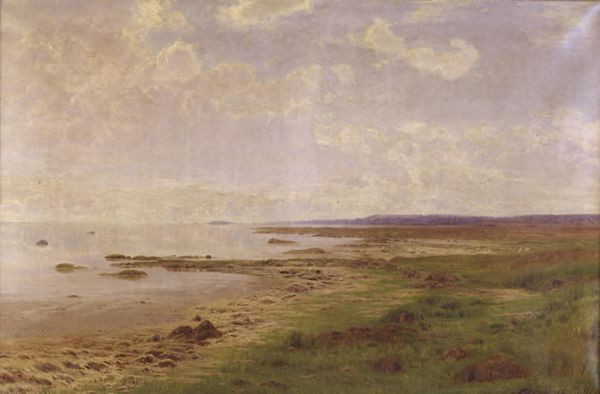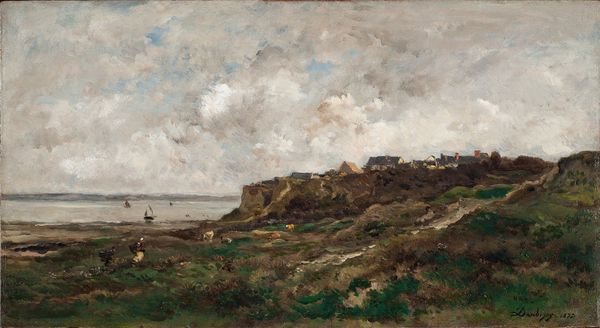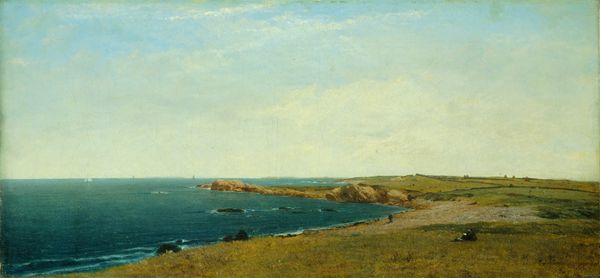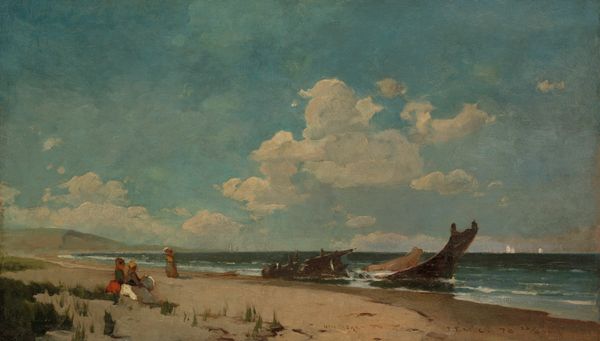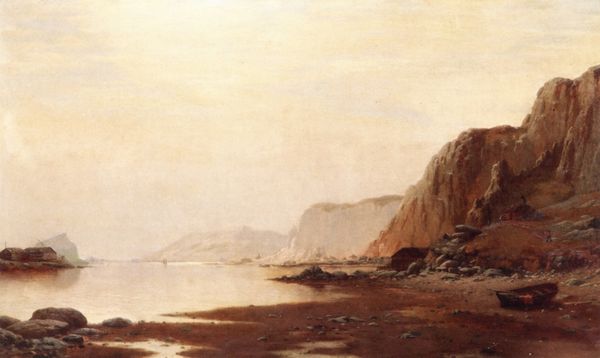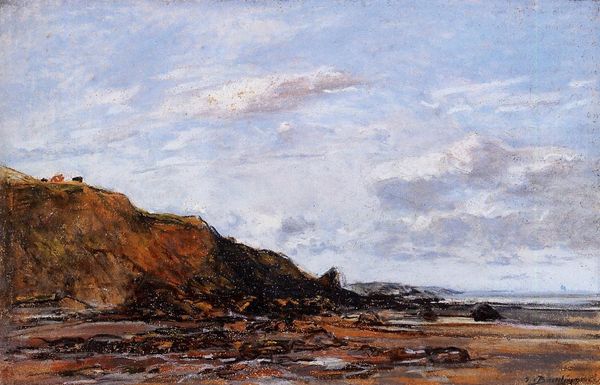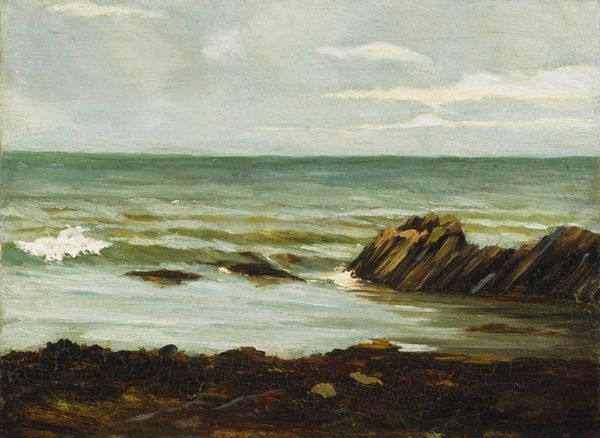
painting, plein-air, oil-paint, watercolor, canvas
#
water colours
#
painting
#
plein-air
#
oil-paint
#
landscape
#
oil painting
#
watercolor
#
canvas
#
underpainting
#
romanticism
#
watercolor
#
realism
Dimensions: 32.5 cm (height) x 51.5 cm (width) (Netto), 43.3 cm (height) x 62.6 cm (width) x 5 cm (depth) (Brutto)
Curator: Looking at Johan Thomas Lundbye's "Study of Cliffs at the South Coast of Refsnæs" from 1847, I can't help but feel a profound sense of tranquility wash over me. It's a watercolor that breathes the very air of the Danish coast. Editor: You're right, it's incredibly serene. My first thought, though, was how stark it feels. The subdued palette makes me think of long shadows and a certain stillness, almost as if time is suspended on that coastline. Curator: Absolutely! Lundbye was deeply embedded in the Romantic movement, yearning to capture the soul of Denmark through its landscapes. This particular view offers us more than just pretty scenery; it’s a piece of national identity being forged in watercolor. Editor: And that national identity was intricately tied to artistic movements that emphasized both realism and emotionality, right? It’s interesting how Lundbye balances meticulous details of the cliffside geology with an atmosphere that evokes a specific mood, a national temperament, if you will. How does the location itself play into the politics of representation in Danish art? Curator: Refsnæs, a specific coastal location, isn't just some random spot. For Lundbye and his contemporaries, such locations represented authentic, untouched nature, which symbolized an uncorrupted Danish spirit. He, like many Golden Age artists, believed art had the power to shape national consciousness. He’s showing you the grit of Denmark, not just pretty postcards. Editor: Which is a really fascinating point. Because while these idyllic images can be seen as celebrating Danish identity, it’s worth noting they also obscure certain socio-economic realities. The focus on unspoiled landscapes often overlooked the realities of agrarian labor and class divisions within the nation itself. But Lundbye wasn't overtly political. Curator: He was searching for something timeless in the temporal, wouldn’t you say? Capturing fleeting light on steadfast cliffs feels so aligned with that artistic search. Editor: True. Thinking about that specific blend of romanticism and nascent realism, "Study of Cliffs at the South Coast of Refsnæs" provides an interesting snapshot. It seems that through scenes like this, viewers could construct an idealized image of what it meant to be Danish in a time of significant political and cultural change. Thanks for highlighting that today. Curator: It’s a slice of sky and stone—painted dreams. A lovely thing to ponder, really.
Comments
No comments
Be the first to comment and join the conversation on the ultimate creative platform.
